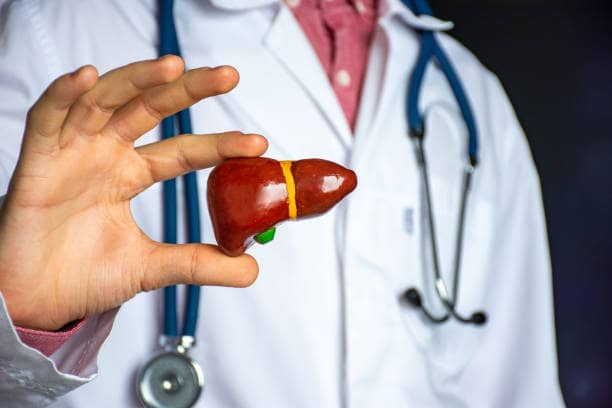Staphylococcus Aureus Treatment: Staphylococcus, often referred to as “staph,” is a group of bacteria that can cause a wide range of infections in humans. While many people may carry staph bacteria on their skin or in their noses without any issues, these bacteria can become problematic when they enter the body through cuts, wounds, or other openings. Staph infections can range from minor skin conditions to life-threatening systemic illnesses. In this comprehensive guide, we will explore the various types of staph infections, their symptoms, diagnosis, and, most importantly, the treatment options available.

Understanding Staph Infections:
Staphylococcus bacteria, specifically Staphylococcus aureus (S. aureus), are commonly found on the skin and in the mucous membranes of healthy individuals. These bacteria are generally harmless unless they enter the body through a breach in the skin or mucous membranes, such as cuts, surgical wounds, or medical devices like catheters. Once inside, staph bacteria can multiply and cause various infections.
Types of Staph Infections:
- Skin Infections:
- Impetigo: A highly contagious skin infection characterized by red sores that burst and develop a honey-colored crust.
- Cellulitis: A bacterial infection that causes redness, swelling, and tenderness in the affected skin.
- Boils and Abscesses: Painful, pus-filled lumps that develop in hair follicles or oil glands.
- Folliculitis: Inflammation of hair follicles, resulting in red, pimple-like bumps.
- Soft Tissue Infections:
- Fasciitis: A rare but severe condition where the infection spreads along the connective tissues beneath the skin.
- Myositis: Infection of the muscles, causing pain and swelling.
- Systemic Infections:
- Bacteremia: The presence of staph bacteria in the bloodstream, which can lead to sepsis if not treated promptly.
- Endocarditis: Infection of the heart valves or inner lining of the heart.
- Pneumonia: Lung infection caused by staph bacteria.
- Osteomyelitis: Bone infection, often occurring after trauma or surgery.
Symptoms of Staph Infections:
The symptoms of a staph infection can vary depending on the type and severity of the infection. Common signs and symptoms include:
- Skin redness, swelling, and warmth.
- Pain or tenderness at the infection site.
- Pus or fluid-filled blisters.
- Fever and chills.
- Fatigue and weakness.
- Rapid heartbeat.
- Shortness of breath and chest pain (for systemic infections).
Diagnosing Staph Infections:
Proper diagnosis is crucial for effective treatment. Doctors use various methods to diagnose staph infections, including:
- Physical Examination: The doctor examines the affected area for signs of infection, such as redness, swelling, and drainage.
- Laboratory Tests:
- Blood Cultures: To detect staph bacteria in the bloodstream.
- Wound Cultures: A sample of pus or tissue is collected and tested for the presence of staph bacteria.
- Imaging Studies: X-rays, CT scans, or MRIs may be used to identify deep-seated infections, such as osteomyelitis or abscesses.
Treatment Options for Staph Infections:
The treatment of staph infections depends on several factors, including the type of infection, its severity, and the overall health of the patient. Below are the primary treatment options for staph infections:
- Antibiotics:
- Mild Skin Infections: Topical antibiotics like mupirocin or oral antibiotics like cephalexin or dicloxacillin may be prescribed.
- Severe Skin Infections: Intravenous (IV) antibiotics like vancomycin or daptomycin may be necessary for more serious cases.
- Systemic Infections: Hospitalization and IV antibiotics are often required for severe infections like bacteremia, endocarditis, or pneumonia.
- Incision and Drainage: For abscesses and boils, the doctor may need to make an incision to drain pus and relieve pressure. This is often done alongside antibiotic treatment.
- Surgery: In cases of deep-seated infections like osteomyelitis or fasciitis, surgical intervention may be necessary to remove infected tissue or bone.
- Supportive Care: Patients with severe staph infections may require supportive care, such as oxygen therapy, intravenous fluids, and monitoring of vital signs.
- Wound Care: Proper wound care is essential for all staph infections. Keep the affected area clean and covered to prevent the spread of bacteria.
Preventing Staph Infections:
Prevention is key when it comes to staph infections, especially since these bacteria are often present in our environment. Here are some preventive measures to reduce the risk of staph infections:
- Hand Hygiene: Regularly wash your hands with soap and water for at least 20 seconds, especially before eating, after using the restroom, and after touching surfaces in public places.
- Skin Care: Keep your skin clean and dry. Shower regularly, and use a clean towel and clean clothing.
- Wound Care: Clean and cover any cuts or wounds with a sterile bandage. Keep them clean and dry.
- Avoid Sharing Personal Items: Do not share towels, razors, or other personal items that may come into contact with broken skin.
- Practice Safe Sex: Use barrier methods like condoms to reduce the risk of sexually transmitted infections, which can increase susceptibility to staph infections.
- Vaccination: Some staph infections can be prevented through vaccination, such as the vaccine for Methicillin-resistant Staphylococcus aureus (MRSA).
Conclusion:
Staph infections are a common and sometimes serious health concern that can affect various parts of the body. Timely diagnosis and appropriate treatment are crucial for a successful recovery. If you suspect a staph infection or experience any symptoms, it’s important to seek medical attention promptly. Additionally, practicing good hygiene and taking preventive measures can significantly reduce the risk of staph infections in the first place. Always consult with a healthcare professional for personalized guidance on the treatment and prevention of staph infections to ensure the best possible outcomes for your health.








One thought on “Staphylococcus Aureus Treatment”